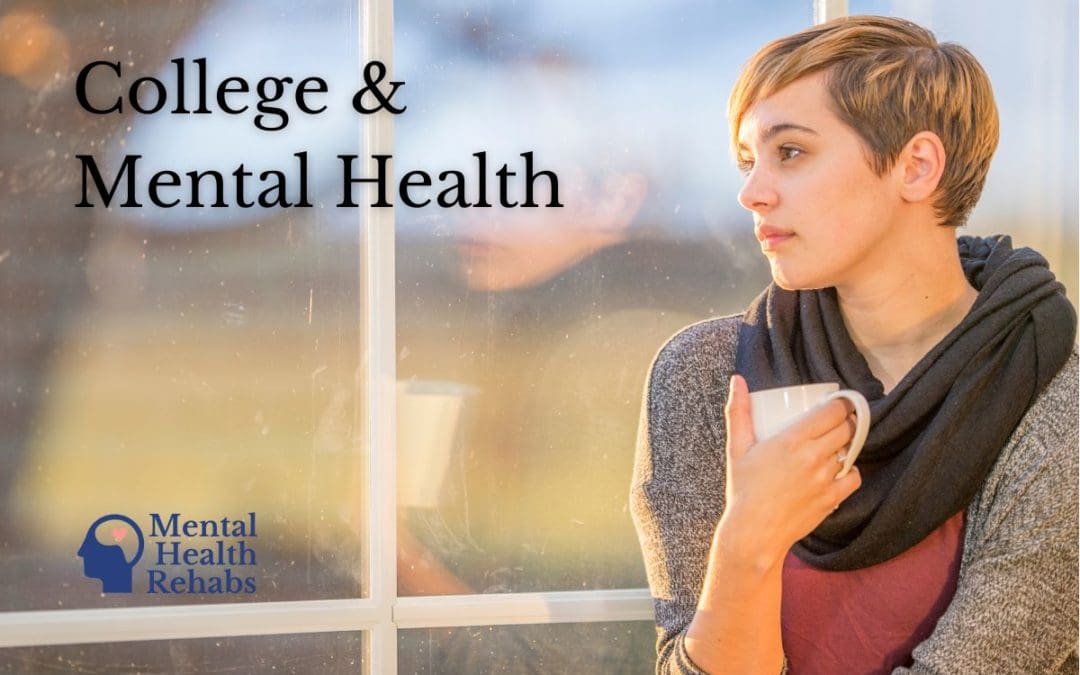Mental health problems in college students are on the rise and campuses are realizing that they have a crisis on their hands. These issues are correlated with lower academic success and an increased risk of dropping out. A worrisome issue on its own, the situation is even more concerning as this population also tends to have higher rates of drug and (especially) alcohol use.
The result? College students face an increased risk of mixing prescription drugs with recreational ones–the consequences of which can quickly turn deadly.
Even in the best-case scenarios, mixing prescription antidepressants, stimulants, or opioids with alcohol can still have devastating results. Alcohol has a tendency to intensify the effects of a prescription drug. Aside from causing unsafe symptoms, it can also cause mayhem for a person’s neurochemical balance. This can drastically worsen the existing mental illness (and the reason why the person was taking prescription medications in the first place) as well as cause new ones–not to mention, the inherent risk of addiction.
How many college students have mental health issues?
According to a nationwide study involving over 300 U.S. college campuses, over 60% of college students met the criteria of having at least one mental health problem. This study compared the reports of students from 2013 to 2021 and found that mental health has gotten worse among students across every metric.
A report from the Center for Collegiate Mental Health (CCMH), showed several sources of mental health issues for college students reaching 18-year highs. The most prevalent was anxiety, followed by suicidality, and trauma. The top concern amongst college students mirrored these results, with 25.7% identifying anxiety as their top concern; 17% as depression, and 6.8% as stress.
The American College Health Association (ACHA) found similar findings. In its most recent college health assessment survey in 2019, about 45% of college students reported feeling “so depressed that it was difficult to function” in the past year. The ACHA also found that over 65% reported feeling overwhelming anxiety in the past year.
What’s causing these mental health problems?
There are several factors that may contribute to the increase in mental health problems among college students. Some of these factors include:
- Stress: College can be a stressful time for many students. It’s a time of academic, financial, and social pressure. These stressors can lead to mental health problems such as anxiety and depression.
- Lack of support: College students may feel isolated and may not have the same support system that they had at home. This can make it harder for them to cope with stress and other challenges.
- Substance abuse: Substance abuse, including the use of prescription drugs and alcohol, can contribute to the development of mental health problems. It is also common for people with mental health problems to self-medicate with substances, which can exacerbate their symptoms.
- Trauma. Trauma can leave a long-lasting psychological scar that can physically alter how the brain operates. These changes are related to a significantly higher risk of these individuals developing some sort of mental illness. According to the CCMH 2021 report, 50% of sampled college students experienced childhood emotional abuse, and 36% experienced some sort of sexual violence.
College student drug usage
According to the National Institute on Alcohol Abuse and Alcoholism (NIAAA), college students are more likely to drink alcohol and use other substances than non-college students of the same age. Approximately 44% of college students reported drinking alcohol in the past month, and about 25% reported binge drinking (drinking 5 or more drinks in a row) in the past month.
College students are also more likely to use marijuana than non-college students of the same age. According to the National Institute on Drug Abuse (NIDA), about 43% of college students reported using marijuana in the past year.
Prescription and over-the-counter drug abuse are also a concern for college students. According to the NIDA, about 8% of college students reported misusing prescription stimulants such as Adderall or Ritalin in the past year, and about 6% reported misusing prescription painkillers. College students also face a greater risk of using other substances such as cocaine, ecstasy, and hallucinogens.
Prescriptions & Alcohol: A dangerous combination
College culture fosters an environment of comparatively high alcohol consumption compared to the general public. While it’s not unsurprising that young adults experiencing unprecedented freedom for the first time are the population most likely to engage in binge drinking, this is coinciding with an increase in mental health issues for this cohort. This can lead to an increased risk of college students mixing drugs like Klonopin and alcohol. Worse still, students with untreated issues may turn to drugs and alcohol as a coping mechanism.
If you’re a student that’s struggling with managing the stress of attending college, talk to a mental health professional today.
Sources:
https://www.sciencedirect.com/science/article/abs/pii/S0165032722002774
https://ccmh.psu.edu/assets/docs/2021-CCMH-Annual-Report.pdf

